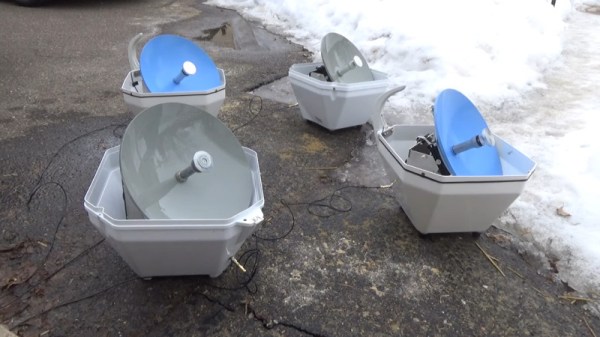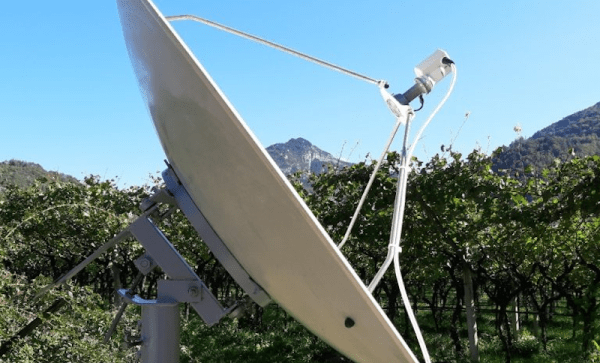Some of the world’s largest radio telescopes are not in fact as physically large as they claim to be, but instead are a group of telescopes spread over a wide area whose outputs are combined to produce a virtual telescope equal in size to the maximum distance between the constituents of the array. Can this be done on the cheap with an array of satellite dishes? It’s possible, but as [saveitforparts] found out when combining a set of Tailgater portable dishes, not simply by linking together the outputs from a bunch of LNBs.
The video below the break still makes for an interesting investigation and the Tailgater units are particularly neat. It prompted us to read up a little on real aperture synthesis, which requires some clever maths and phase measurement for each antenna. Given four somewhat more fancy LNBs with phase-locked local oscillators and an software-defined radio (SDR) for each one then he might be on to something.
If you’re curious about the cyberdeck in the video, you might like to read our coverage of it. And the Tailgater might be a bit small, but you can still make a useful radio telescope from satellite TV parts.
Continue reading “Nice Try, But It’s Not Aperture Synthesis”















